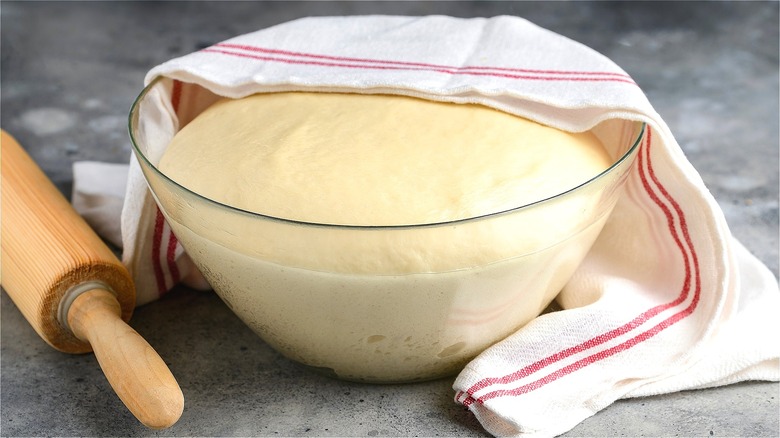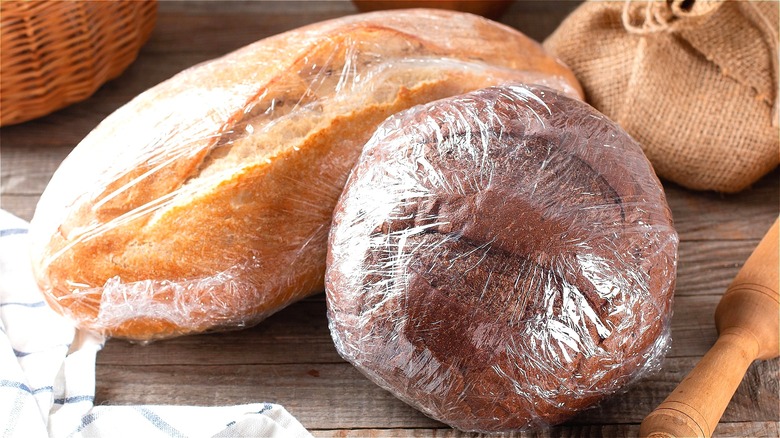Will Bread Dough Rise Even After It's Been Frozen?
If you've been hoping to streamline your time in the kitchen, you may have considered freezing extra bread dough to make one more sourdough farm loaf or batch of rolls in the near future. While you can easily make cookies with frozen dough, freezing bread dough is more intimidating, but you can rely on your freezer and still make a delicious loaf. With mindful preparation and proper storage, your dough can achieve a successful rise after a long rest in cold storage.
To produce the best results, most recipes need to be placed in the freezer at a certain stage in the bread-making process. When it comes to non-yeasted doughs, such as beer bread or 2-ingredient biscuits, freeze your dough directly after mixing and shaping. However, yeasted dough requires more attention. For any yeast-leavened recipe, allow your dough to undergo an initial rise at room temperature. During this first rise, avoid over-proofing and make sure your dough doesn't become too aerated or puffy.
Once your bread dough has successfully risen, punch it down, shape into its intended form, wrap in plastic wrap followed by metal foil, and place it in a baking tray or dish before freezing. For rolls or other small breads, first freeze each one on a baking sheet. Then, the shaped portions can be stored together in a resealable freezer-safe bag. There are a few more preventative measures you may want to take in order to attain soft and fluffy bread every time.
How to achieve the best rise once your bread has been frozen
Whether you're using active dry yeast or instant yeast, you may want to add more than your recipes suggest when it comes to bread that's headed to the freezer. Increase the amount of yeast by up to ½ teaspoon for every three cups of flour. The extra amount helps to ensure your frozen dough has a healthy second rise. Additionally, recipes that include decent amounts of sugar and yeast, like traditional white bread, freeze better than recipes that are higher in fat and salt.
Once you've taken these factors into consideration and your dough has been successfully prepared and frozen, you need to familiarize yourself with the best protocol for thawing. Remove your prepared dough from the freezer and allow it to defrost overnight, fully covered, in your refrigerator. The following day, allow your bread to rise for a second time at room temperature before baking.
While making delicious bread straight from your freezer is possible, be aware that the quality of your finished product is contingent upon the ingredients used and the amount of yeast included in each recipe. If all this methodical preparation sounds stressful, for consistent results every single time, just freeze fully-cooked bread loaves instead.


